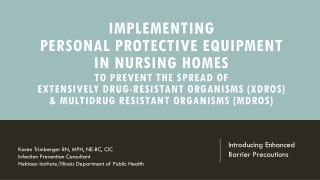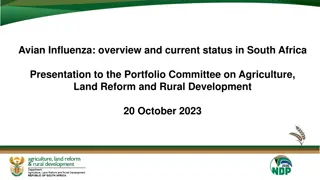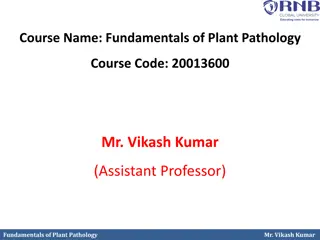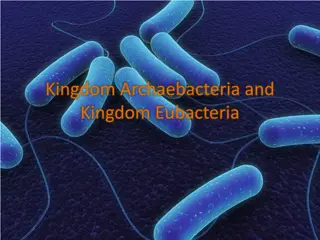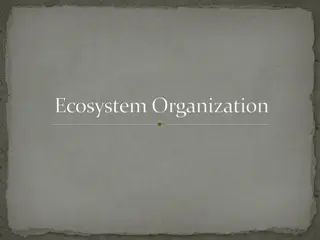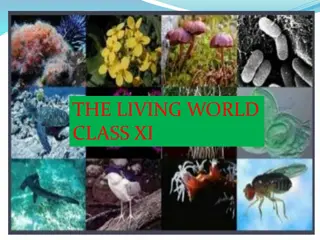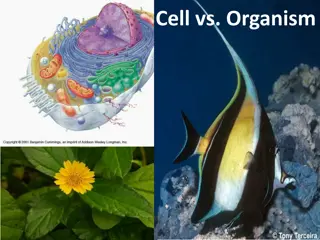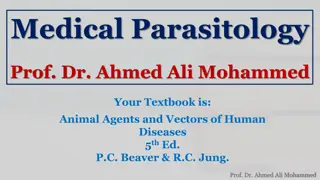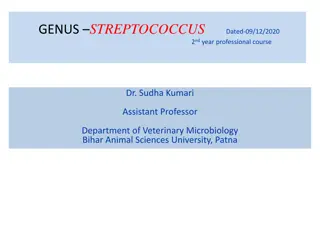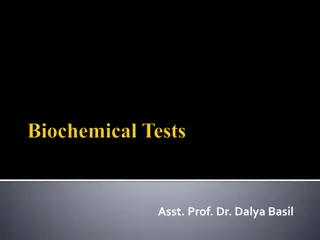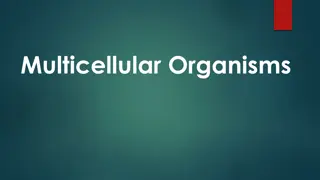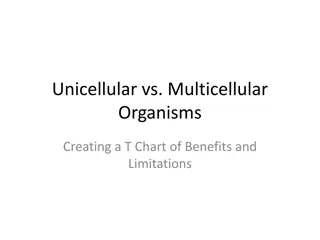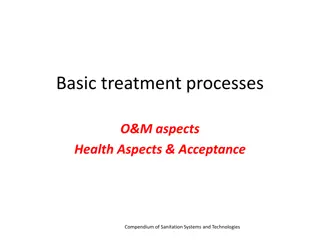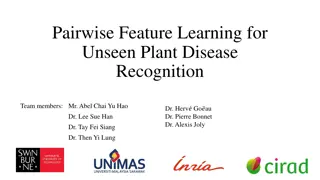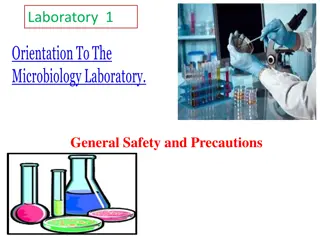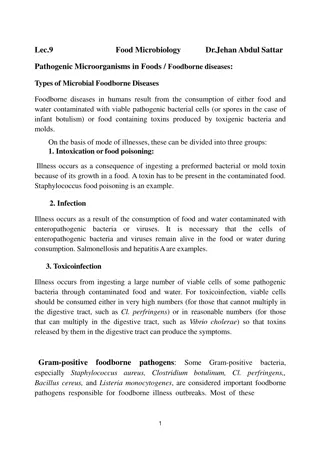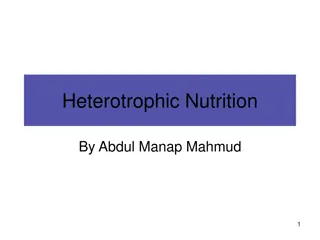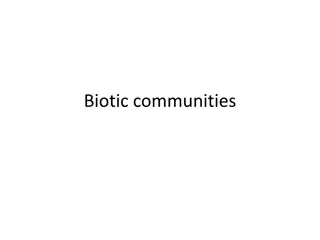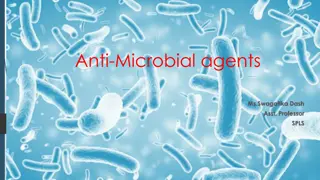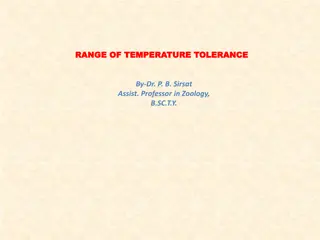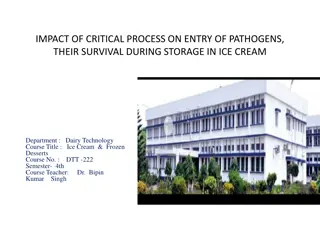Implementing Personal Protective Equipment in Nursing Homes for Preventing XDROs and MDROs
Learn from infection prevention consultant Karen Trimberger about implementing enhanced barrier precautions in nursing homes to prevent the spread of extensively drug-resistant organisms (XDROs) and multidrug-resistant organisms (MDROs). Explore the difference between colonization and clinical infec
6 views • 33 slides
Impact of Highly Pathogenic Avian Influenza 2023 on South African Broiler Industry
The presentation by the South African Poultry Association sheds light on the detrimental effects of Highly Pathogenic Avian Influenza (HPAI) on the broiler industry in South Africa. Factors such as load shedding, water supply interruptions, and now, the outbreak of H7N6, have exacerbated the financi
4 views • 19 slides
Avian Influenza Overview and Outbreak History in South Africa
Avian Influenza, specifically Highly Pathogenic Avian Influenza (HPAI) outbreaks in South Africa, have been documented since 2004, affecting primarily ostriches and poultry. Wild bird transmission remains a concern, with risk factors such as rainfall, temperature, wetlands, and poultry movements con
2 views • 25 slides
Understanding Ecology: Interactions Between Organisms and their Environment
Ecology is the scientific study of how living organisms interact with each other and their environment. It delves into the relationships between biotic and abiotic factors, encompassing topics such as the distribution and abundance of organisms, structural adaptations, behavior under natural conditi
2 views • 42 slides
Understanding Ecosystems: Ecological Interactions and Dependencies
Ecology is the study of how organisms interact with their environment, influencing their distribution and abundance. This exploration covers terrestrial and aquatic biomes, energy flow, environmental impacts, adaptations, and global ecosystems, emphasizing the interconnectedness of all living organi
2 views • 58 slides
Fundamentals of Plant Pathology with Mr. Vikash Kumar - Course Overview and Important Pathogens
This course with Mr. Vikash Kumar covers the fundamentals of plant pathology, including identification of diseases, pathogen nature, disease management strategies, and principles. Learn about important plant pathogenic organisms such as fungi, bacteria, and fastidious vascular bacteria, along with s
0 views • 12 slides
Understanding Homeostasis in Living Organisms
Homeostasis, derived from Greek meaning "standing still", is crucial for maintaining balance in living organisms. It involves regulating internal variables to prevent disease or death. Ancient Greeks emphasized the importance of harmony and equilibrium in life. Claude Bernard and Walter B. Cannon fu
1 views • 29 slides
Understanding Levels of Organization in Living Organisms
Explore the levels of organization in living organisms, from atoms to cells, and the differences between unicellular and multicellular organisms. Learn about prokaryotes, eukaryotes, cell differentiation, chromosomes, and the importance of stem cells in development and repair.
0 views • 17 slides
Exploring Unicellular Organisms: Amoeba and Euglena Structures and Characteristics
Journey into the microscopic world of unicellular organisms with a focus on Amoeba and Euglena. Discover the unique structures and behaviors of these tiny creatures, from Amoeba's adaptable pseudopod movements to Euglena's photosynthesis capabilities. Uncover how these organisms survive, feed, and r
0 views • 15 slides
Contrasting Kingdoms: Archaebacteria vs Eubacteria
Archaebacteria and Eubacteria are two distinct kingdoms of bacteria with unique characteristics. Archaebacteria, originating from Ancient Greek, are ancient organisms thriving in extreme conditions without peptidoglycan in their cell walls, while Eubacteria, the most common bacteria, have peptidogly
0 views • 11 slides
Adaptations for Efficient Material Exchange in Organisms
Understanding how cells and organisms adapt for effective material exchange through diffusion, surface area to volume ratio, and specialized exchange surfaces. Larger organisms require specialized structures for efficient exchanges, in contrast to smaller organisms that can rely on simple diffusion.
0 views • 19 slides
Understanding Ecosystem Organization and Hierarchy
Explore the intricate relationships within ecosystems through the study of organization and hierarchy. From individual organisms to complex communities, learn how biotic and abiotic factors shape these environments. Gain insights into the levels of ecosystem organization, from single organisms to in
5 views • 15 slides
Understanding the Characteristics of Living Organisms
Life is a unique biochemical process expressed through chemical reactions leading to growth, development, responsiveness, adaptation, and reproduction. Living organisms exhibit characteristics such as growth, definite shape and size, reproduction, metabolism, and cellular organization. These traits
4 views • 32 slides
Understanding Gas Exchange in Cells and Organisms
Gas exchange is vital for cellular respiration and photosynthesis. In organisms, specialized structures like alveoli in lungs and stomata in plants facilitate this process. This exchange occurs through diffusion across moist surfaces with large surface areas. In animals, oxygen is taken up by hemogl
0 views • 40 slides
Fundamentals of Taxonomy Explained: From Classification to Nomenclature
Taxonomy, derived from Greek roots, encompasses the science of classifying organisms and understanding their variations, evolutionary relationships, and naming conventions. It involves description, identification, classification, and nomenclature of both living and extinct organisms. The practices o
1 views • 39 slides
Understanding Parasitism in Medical Parasitology by Prof. Dr. Ahmed Ali Mohammed
Prof. Dr. Ahmed Ali Mohammed delves into the intriguing world of parasitism, exploring the complex relationships between parasites and hosts. He explains the various types of relationships in parasitology, such as symbiosis, mutualism, commensalism, and parasitism, shedding light on how parasites in
0 views • 23 slides
Overview of Streptococcus Bacteria and Classification
Streptococcus is a genus of gram-positive bacteria commonly found on skin and mucous membranes. It includes pathogenic and non-pathogenic species, with cell division along a single axis forming pairs or chains. The bacteria were first observed by Billroth and named by Ogston. Different types of stre
0 views • 28 slides
Understanding Coagulase Test in Microbiology
Coagulase test is a crucial microbiological technique used to differentiate Staphylococcus aureus, which produces coagulase, from other species like S. epidermis and S. saprophyticus that do not. This test helps in identifying the presence of bound and free forms of coagulase, aiding in the accurate
0 views • 56 slides
Understanding Plant Pathology: Importance, Scope, and Objectives
Plant pathology, also known as phytopathology, is the study of plant diseases and their management. It covers the causes, symptoms, and impact of pathogenic organisms on plants. The field aims to understand the interactions between plants and pathogens, develop control methods, and reduce losses in
0 views • 6 slides
Exploring Multicellular Organisms: Structures and Functions
Learn about multicellular organisms, including examples like humans, animals, and plants, and how their cells, tissues, organs, and systems work together to perform various functions. Understand the difference between single-celled and multicellular organisms and why some require specialized cells t
0 views • 15 slides
Reproduction in Organisms: Overview and Types
Understanding the concept of reproduction in organisms, this content delves into the different modes of reproduction such as asexual and sexual, with examples and illustrations. It covers the life spans of various organisms and details various methods of asexual reproduction like fission, budding, s
0 views • 23 slides
Unicellular vs. Multicellular Organisms: A Comparative Analysis
Unicellular and multicellular organisms differ in structure, division of labor, specialization, exposure to environment, response to injury, size limitations, lifespan, and ability to divide. Unicellular organisms have a single-cell body, limited operational efficiency, and face challenges in size a
0 views • 12 slides
Understanding Ecosystem Dynamics: The Food Web Explained
An ecosystem comprises various organisms living together in a community. Energy flow through food chains depicts how organisms obtain energy and nutrients from one another. Food chains show the sequence of feeding relationships, while a food web illustrates interconnected chains within a community.
1 views • 13 slides
Understanding Relationships Between Organisms in Nature
Explore the various relationships between organisms in nature, including intraspecific and interspecific interactions such as competition, predation, and parasitism. Learn how organisms compete for resources, hunt and protect themselves, as well as how parasites survive on host organisms. Delve into
2 views • 13 slides
Operation and Maintenance Aspects of Sanitation Systems
Maintenance of basic treatment processes, settlers, and anaerobic baffled reactors (ABR) is crucial for efficient functioning. Regular sludge removal, careful handling of pathogenic organisms, and monitoring scum levels are essential tasks. Anaerobic systems like ABR require a start-up period and sp
0 views • 32 slides
Comprehensive Assessment of a Pathogenic CNV in a 2-Year-Old Male with Developmental Delay and Seizures
In this case study, a 2-year-old male presenting with developmental delay and seizures was evaluated for a CNV at the 12p13.1p12.3 region. The CNV was found to overlap with the GRIN2B gene, a known haploinsufficient gene associated with developmental disorders. Despite potential additional scoring c
0 views • 17 slides
Understanding Unicellular and Multicellular Organisms in Biology
Explore the basic differences between unicellular and multicellular organisms, including the distinctions between prokaryotes and eukaryotes. Unicellular organisms, such as bacteria and amoeba, consist of a single cell and are often microscopic. Examples of both prokaryotic and eukaryotic unicellula
0 views • 10 slides
Understanding Taxonomy and Classification in Biology
Scientists use classification to group organisms logically, making it easier to study life's diversity. Taxonomy assigns universally accepted names to organisms using binomial nomenclature. Carolus Linnaeus developed this system, organizing organisms into species, genus, family, order, class, phylum
0 views • 11 slides
Effects of Spicy Foods on Pathogenic Microbial Growth: A Study on Rosemary and Clove
Spicy foods like rosemary and clove have shown potential in inhibiting pathogenic microbial growth, which can help enhance food safety by reducing the need for chemical additives. This study explores the antimicrobial effects of these spices using microbial strains like Pseudomonas Fluorescens and S
0 views • 14 slides
Understanding Avian Influenza: Symptoms, Diagnosis, and Prevention
Avian influenza, or bird flu, is a viral disease affecting birds' respiratory, digestive, and nervous systems. It presents in two forms - Highly Pathogenic Avian Influenza Virus (HPAIV) and Low Pathogenic Avian Influenza Virus (LPAIV). The virus has two important surface antigens, Hemagglutinin (H)
0 views • 7 slides
Pairwise Feature Learning for Unseen Plant Disease Recognition
Plant diseases pose a significant threat to agricultural production, often caused by pathogenic organisms. This project focuses on pairwise feature learning for the recognition of unseen plant diseases. The research aims to design a model that can effectively classify both seen and unseen compositio
0 views • 11 slides
Understanding Kitchen Hygiene and Food Safety
Kitchen hygiene and food safety are crucial to prevent food spoilage and food poisoning. Factors like enzymes, micro-organisms, and oxygen can lead to food spoilage, while food poisoning occurs when pathogenic bacteria multiply in consumed food. Practicing proper hygiene, storage, and preparation me
0 views • 27 slides
Laboratory General Safety and Precautions
Microbiology involves the study of microorganisms such as bacteria, fungi, viruses, and parasites. It is crucial to maintain strict safety protocols in the laboratory to prevent contamination and ensure the well-being of individuals handling these potentially pathogenic organisms. Rules like wearing
0 views • 26 slides
Understanding Cellular Respiration and Fermentation Processes
Cellular respiration is the energy-releasing process in which organisms take in glucose and oxygen to produce carbon dioxide, water, and energy. This process is vital for all living organisms. Photosynthesis and respiration are opposite processes, with respiration requiring the products of photosynt
0 views • 10 slides
Understanding Foodborne Diseases and Pathogenic Microorganisms in Foods
Foodborne diseases in humans are caused by consuming contaminated food or water containing pathogenic microorganisms or toxins. These diseases can be categorized into intoxication, infection, and toxicoinfection, each with distinct modes of illness. Pathogens like Staphylococcus aureus, Clostridium
0 views • 5 slides
Understanding Heterotrophic Nutrition in Organisms
Heterotrophic nutrition refers to the process where organisms, such as animals, rely on preformed organic molecules from their environment or other organisms for nutrients and energy. These organisms are unable to produce organic compounds from inorganic sources and must obtain nourishment from exte
0 views • 55 slides
Understanding Biotic Communities and Benthic Ecosystems
Living organisms in an area form biotic communities categorized into producers, consumers, omnivores, detrivores, and decomposers. Aquatic organisms such as plankton, benthos, and nekton play vital roles. Benthic communities refer to organisms attached to or burrowing in aquatic ecosystems, influenc
0 views • 17 slides
Understanding Anti-Microbial Agents and Their Applications
Anti-microbial agents, including antiseptics, disinfectants, and germicides, play a crucial role in preventing infections and promoting public health. They can inhibit the growth of pathogenic micro-organisms on living tissues, objects, and materials. Sterilization ensures complete destruction of al
0 views • 16 slides
Temperature Tolerance of Organisms in the Universe
Life on Earth exists within a range of temperatures, with organisms displaying varied temperature tolerance. Eurythermal organisms can withstand large temperature fluctuations, while stenothermal organisms tolerate only small variations. The temperature range for each species is crucial for their ph
0 views • 8 slides
Impact of Critical Process on Pathogen Entry and Survival in Ice Cream Manufacturing
The critical processes in ice cream manufacturing, such as pasteurization, homogenization, and chilling, play a crucial role in reducing pathogens and microorganisms, ensuring product safety. Pasteurization at specific temperatures and times effectively eliminates pathogenic organisms, while homogen
0 views • 9 slides
